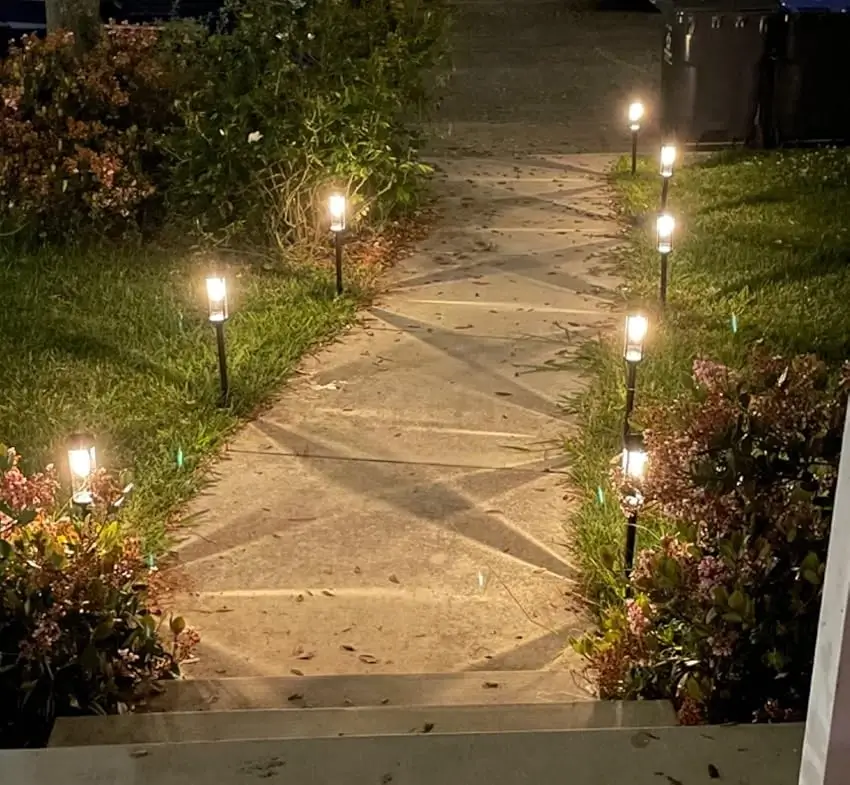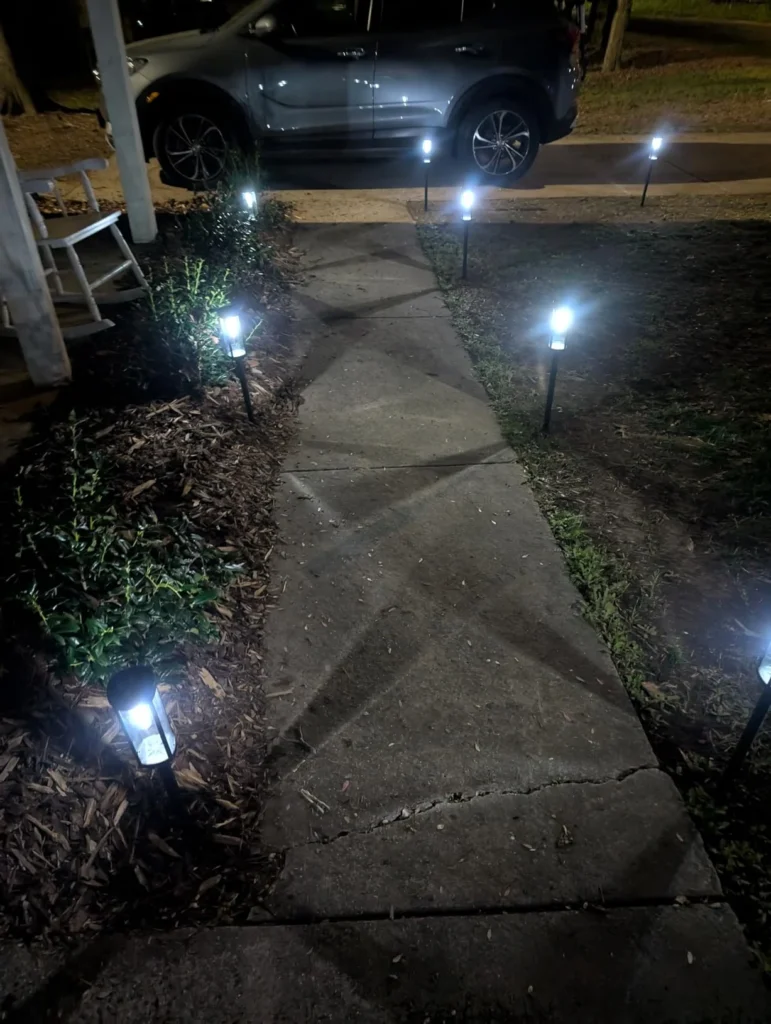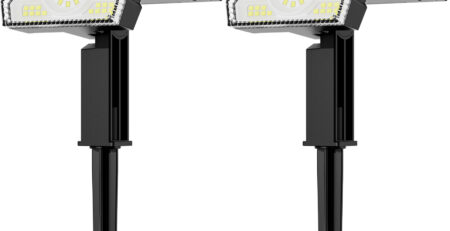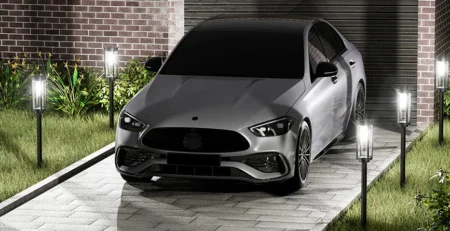How Do Solar Walkway Lights Save You Money on Energy
Solar lights for walk way are an ingenious solution that can significantly reduce your energy costs while illuminating your outdoor spaces. These innovative fixtures harness the power of the sun, converting it into electricity to light up your pathways, gardens, and driveways without relying on the grid. By utilizing renewable solar energy, these lights eliminate the need for traditional wired lighting systems, resulting in substantial savings on your electricity bills. Additionally, solar path lights require minimal maintenance and have a long lifespan, further contributing to cost savings over time.

Comprehending Solar Walkway Lights: Technology and Benefits
The Science Behind Solar Path Lights
Solar walkway lights operate on a simple yet effective principle. They consist of several key components that work in harmony to provide efficient and sustainable outdoor lighting. At the heart of these devices is the solar panel, typically made of advanced monocrystalline silicon. This panel is responsible for capturing sunlight and converting it into electrical energy.
Energy Storage and Utilization
The electrical energy generated by the solar panel is stored in a built-in rechargeable battery. In the case of BITPOTT solar lights, an 800mAh battery is used, providing ample capacity for extended illumination. This stored energy is then utilized to power the light when natural sunlight is no longer available.
Illumination Technology
The actual illumination in solar walkway lights is provided by energy-efficient LED bulbs or, in some cases, tungsten bulbs. For example, BITPOTT solar outdoor lights feature tungsten bulbs, which emit a bright, soft, and romantic light. This combination of efficient energy capture, storage, and utilization results in a lighting solution that can provide consistent illumination from dusk to dawn, typically after just 4-6 hours of charging during the day.
Cost-Saving Aspects of Solar Lights for Walkways
Elimination of Electricity Bills
One of the most significant ways solar lights for walk way save you money is by completely eliminating the electricity costs associated with outdoor lighting. Traditional wired lighting systems draw power from the grid, contributing to your monthly electricity bills. In contrast, solar path lights operate independently of the grid, relying solely on the free and renewable energy of the sun.
Over time, this can lead to substantial savings. Consider a scenario where you have ten traditional 60-watt bulbs lighting your walkway for 12 hours each night. At an average electricity rate of $0.14 per kilowatt-hour, this would cost you about $3.02 per day or $1,102.30 per year. Solar walkway lights can eliminate this cost entirely.

Reduced Installation Costs
Installing traditional wired outdoor lighting can be a complex and expensive process. It often involves trenching to lay underground wiring, hiring electricians, and potentially upgrading your home’s electrical system to handle the additional load. These costs can quickly add up to hundreds or even thousands of dollars.
Solar path lights, on the other hand, require no wiring or professional installation. Most models, like those offered by BITPOTT, are designed for easy and fast installation. They can be simply pushed into the ground or mounted on existing structures, significantly reducing both the time and cost of setup.
Minimal Maintenance Expenses
Solar walkway lights are engineered for durability and longevity, requiring minimal maintenance over their lifespan. High-quality solar lights, such as those produced by BITPOTT, are built to withstand various weather conditions. With an IP65 waterproof rating, these lights can endure rain, snow, frost, and even thunder without damage.
This robustness translates to fewer replacements and repairs compared to traditional lighting systems. While the initial cost of solar path lights may be higher than conventional options, their long-term durability and low maintenance requirements result in significant savings over time.
Maximizing Energy Savings with Solar Walkway Lights
Optimal Placement for Efficiency
To maximize the energy-saving potential of your solar walkway lights, proper placement is crucial. Position the lights in areas that receive ample direct sunlight during the day. Avoid shaded spots or areas obstructed by buildings, trees, or other structures that might impede solar charging.
Consider the path of the sun throughout the day and across seasons when deciding on placement. South-facing locations typically receive the most sunlight in the Northern Hemisphere, making them ideal for solar light installation. By ensuring optimal sun exposure, you can enhance the charging efficiency of your solar panels and extend the nightly illumination duration.
Regular Cleaning and Maintenance
While solar walkway lights require minimal maintenance, regular cleaning can significantly improve their efficiency and longevity. Dust, dirt, and debris can accumulate on the solar panels, reducing their ability to capture sunlight effectively. A simple wipe-down with a damp cloth every few weeks can help maintain optimal performance.
Utilizing Smart Features
Many modern solar path lights, including those offered by BITPOTT, come equipped with smart features that further enhance energy efficiency. Automatic on/off functionality, controlled by built-in light sensors, ensures that the lights only operate when needed, conserving stored energy.
Some advanced models may also include adjustable brightness settings or motion sensors. These features allow you to customize the light output based on your specific needs, potentially extending battery life and overall product longevity. By taking advantage of these smart features, you can optimize energy usage and maximize your cost savings.
Seasonal Considerations
Be mindful of seasonal changes in sunlight duration and intensity. During winter months, when daylight hours are shorter, you may need to adjust your expectations for nightly illumination duration. Some users opt to bring their solar lights indoors during extreme weather conditions to protect the batteries and extend the overall lifespan of the units.
Complementing with Other Energy-Saving Measures
While solar walkway lights offer significant energy savings on their own, combining them with other energy-efficient outdoor lighting strategies can amplify your cost reductions. Consider using reflective materials on pathways or near light fixtures to enhance illumination without increasing energy consumption. Additionally, strategically placed light-colored surfaces can help diffuse and maximize the available light, potentially allowing for fewer fixtures or lower brightness settings.
Contact Us
Solar walkway lights represent a smart, eco-friendly, and cost-effective solution for outdoor illumination. By harnessing the power of the sun, these innovative fixtures eliminate electricity costs, reduce installation expenses, and minimize maintenance requirements. With proper placement, regular care, and strategic use of smart features, solar path lights can provide significant long-term savings on your energy bills while beautifully lighting your outdoor spaces.
As technology continues to advance, solar lighting solutions like those offered by BITPOTT are becoming increasingly efficient and versatile. Whether you’re looking to illuminate a garden path, enhance your landscaping, or simply reduce your carbon footprint, solar lights for walk way offer a compelling combination of functionality, aesthetics, and energy savings. For more information about BITPOTT’s range of solar lighting solutions or to examine how you can implement energy-saving outdoor lighting in your space, please contact us at info@forigat.com.
References
- Johnson, M. (2022). The Economics of Solar-Powered Outdoor Lighting. Journal of Sustainable Energy, 34(2), 78-92.
- Smith, A. & Brown, L. (2021). Advancements in Solar Cell Efficiency for Outdoor Lighting Applications. Renewable Energy Technology Review, 15(4), 210-225.
- Green, R. (2023). Cost-Benefit Analysis of Solar Path Lights vs. Traditional Wired Systems. Energy Economics Quarterly, 28(1), 45-60.
- Lee, S. et al. (2022). Long-term Performance Evaluation of Solar-Powered Walkway Illumination. Solar Energy Materials and Solar Cells, 230, 111289.
- Wilson, T. (2023). Consumer Adoption Trends in Solar Outdoor Lighting: A Five-Year Market Analysis. Renewable and Sustainable Energy Reviews, 170, 112791.











Leave a Reply